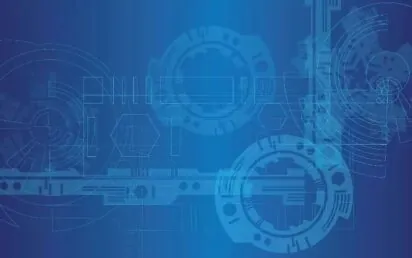Is your brand tired and in need of a new look?
Imagine if you could use artificial intelligence to create a new brand at the touch of a button and it didn’t cost you a penny. What would be the impact on traditional design agencies?
BusinessCloud decided to put the AI bots to the test by asking them to create some alternative branding and the process couldn’t have been simpler.
The AI bots used by the likes of LogoPony, Tailor Brands and Brand Mark started by asking us for the name of the business.
After specifying our preferred range of colours, fonts and logos, they all presented us with a seemingly endless array of new designs to choose from within seconds.
You only pay if you use a particular design. Some of the brands were more eye-catching than others but if AI can perform this simple action in a matter of seconds what other roles carried out by traditional design agencies could it replace?
Yali Saar is the CEO of Tailor Brands and believes it’s too early to sound the death knell for designers just yet.“I think that designers will always be relevant but like many other positions their role would evolve,” he told BusinessCloud.
Tailor Brands was founded in 2014 and has offices based in New York City and Tel-Aviv. It has used its AI to create over 45 million brands to date.
“Being ’creative’ is all about creating new things. Today much of the designer’s role is to do the dirty work of turning their vision into reality,” he said.
“I think that we are going to see much of what happened to web design happening to designers in general; more of the mundane work automated and more of the interesting work getting more focus.”
As with a lot of the AI brand bots, Tailor Brands presents new users with randomly generated choices. These choices restrict what the AI can produce.
The AI doesn’t understand how to create good designs, it simply knows how to replicate them. Jack Qiao is the developer behind BrandMark and says AI is perfect for the customer on a budget.
“Visual design at its core is driven by the search for novelty which is a weakness of current AI technology,” he said.
“I think the future of design is one where AI informs the designer with quantitative facts and the designer contributes to aesthetic decisions.”
Qiao is the Vancouver-based one-man team that set up Brand Mark. His website has created 210,000 logos since launch its launch in August 2017.
“To create logos we combine text and icons in many different layouts,” he explained.
“We pass an entire library of 1.4 million icons through a neural net, scoring each one based on metrics like contrast, legibility and a unique shape compared to other icons.
“The colours used in our logos are also generated via AI, using a generative adversarial network. This ensures that every logo we generate has a unique colour scheme.”
Qiao says that his website’s extensive use of deep learning is what enables the website to create unique designs.
Whilst AI design might be slowly catching up to human design standards, it doesn’t necessarily mean it is in competition. Logopony, an Estonia-based company founded in 2016, use human designers in the primary processes.
“We add more emphasis on design diversity of produced logos that deeply involves human designers in the process,” explained its creator, Eugene Kondratyev.
“We get the data of what people like, then pass it to the designers and then together we adjust our models to create better logos.”
Kondratyev acknowledges that his AI-based web tool could threaten the careers of future designers, but says he wants to find a way to ensure they are involved.
“We are constantly thinking of ways to blend our technology and people together; not to replace the designers but to empower them to make better branding,” he said.
“Entry level branding designers might still be needed in the coming years but in the 5-10 year they are at high risk.”


